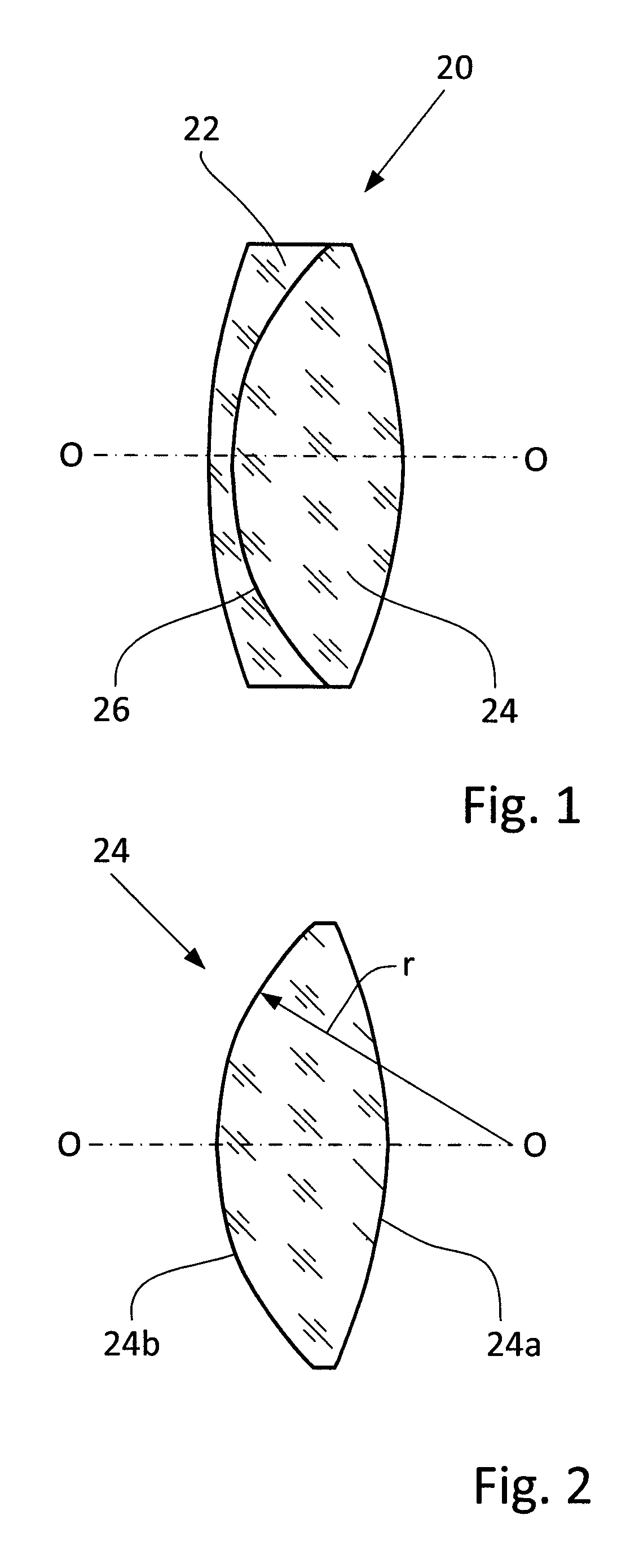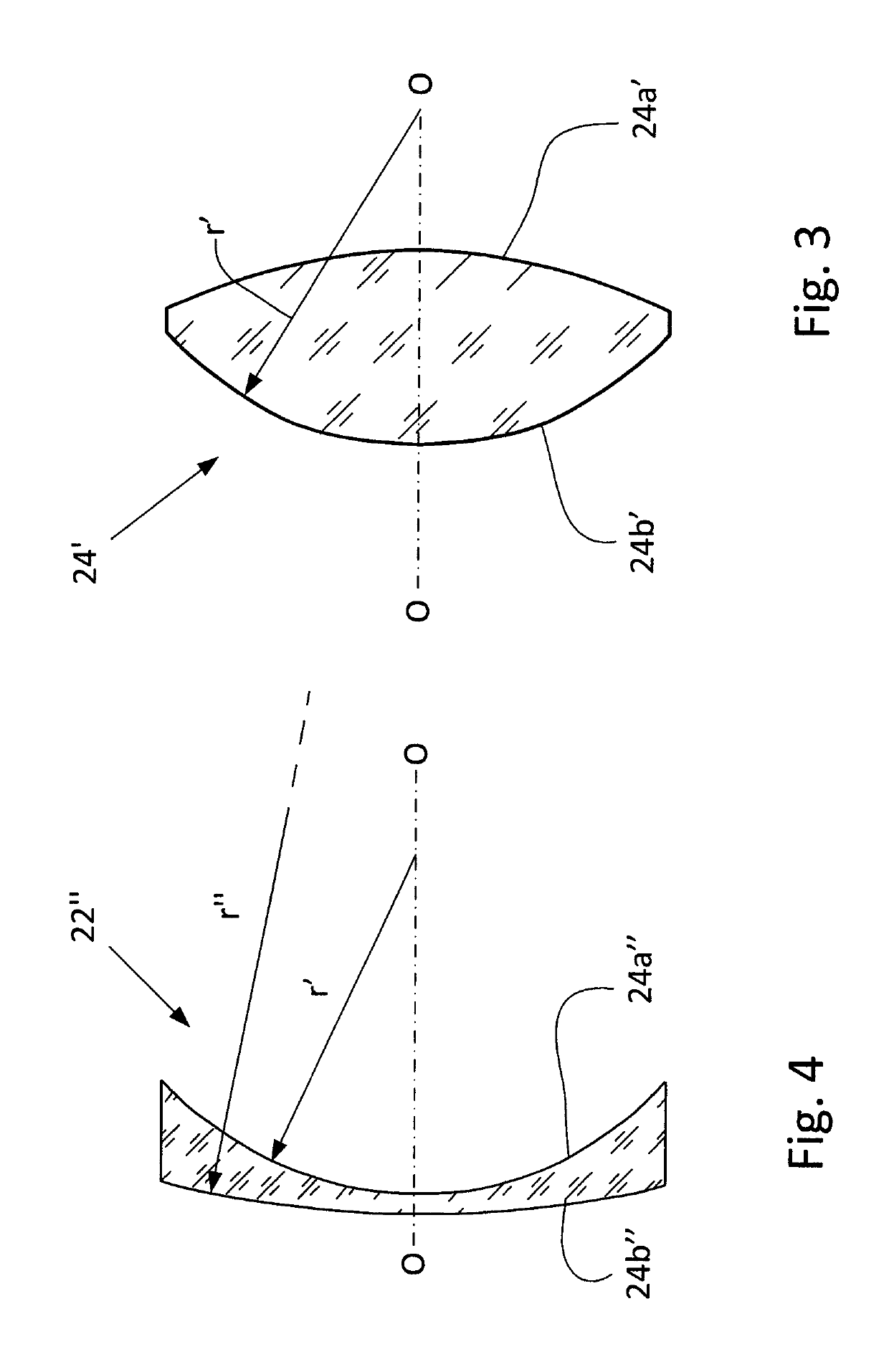Ophthalmic lens doublet for ophthalmoscopy
a technology of indirect ophthalmoscopy and ophthalmic lens, which is applied in the field of ophthalmoscopy, can solve the problems of devices that do not find wide application, and achieve the effect of optimizing asphericity and highest possible quality
- Summary
- Abstract
- Description
- Claims
- Application Information
AI Technical Summary
Benefits of technology
Problems solved by technology
Method used
Image
Examples
Embodiment Construction
[0023]It is understood that because the size of the patient's retina image on the observer's retina is smaller than the illuminated area of the patient's retina, it seems it would be appropriate to make an ophthalmic lens with the diameter as big as possible. However, such an approach is associated with some problems. More specifically, a large field of view requires adequate image quality correction not only for the central field point but for edges as well. Usually, a conventional ophthalmic lens is a simple lens with spherical surfaces, and the above requirement leads to steep radii. It should be noted that the field of view depends not only on the lens diameter but rather on the focal or working distance of the ophthalmic lens, and the smaller is this distance, the higher is lens dioptricity and the greater the field of view.
[0024]Another reason for which lenses exclusively with spherical surfaces practically do not find use in ophthalmoscopy is that their geometric and chromati...
PUM
 Login to View More
Login to View More Abstract
Description
Claims
Application Information
 Login to View More
Login to View More - R&D
- Intellectual Property
- Life Sciences
- Materials
- Tech Scout
- Unparalleled Data Quality
- Higher Quality Content
- 60% Fewer Hallucinations
Browse by: Latest US Patents, China's latest patents, Technical Efficacy Thesaurus, Application Domain, Technology Topic, Popular Technical Reports.
© 2025 PatSnap. All rights reserved.Legal|Privacy policy|Modern Slavery Act Transparency Statement|Sitemap|About US| Contact US: help@patsnap.com


